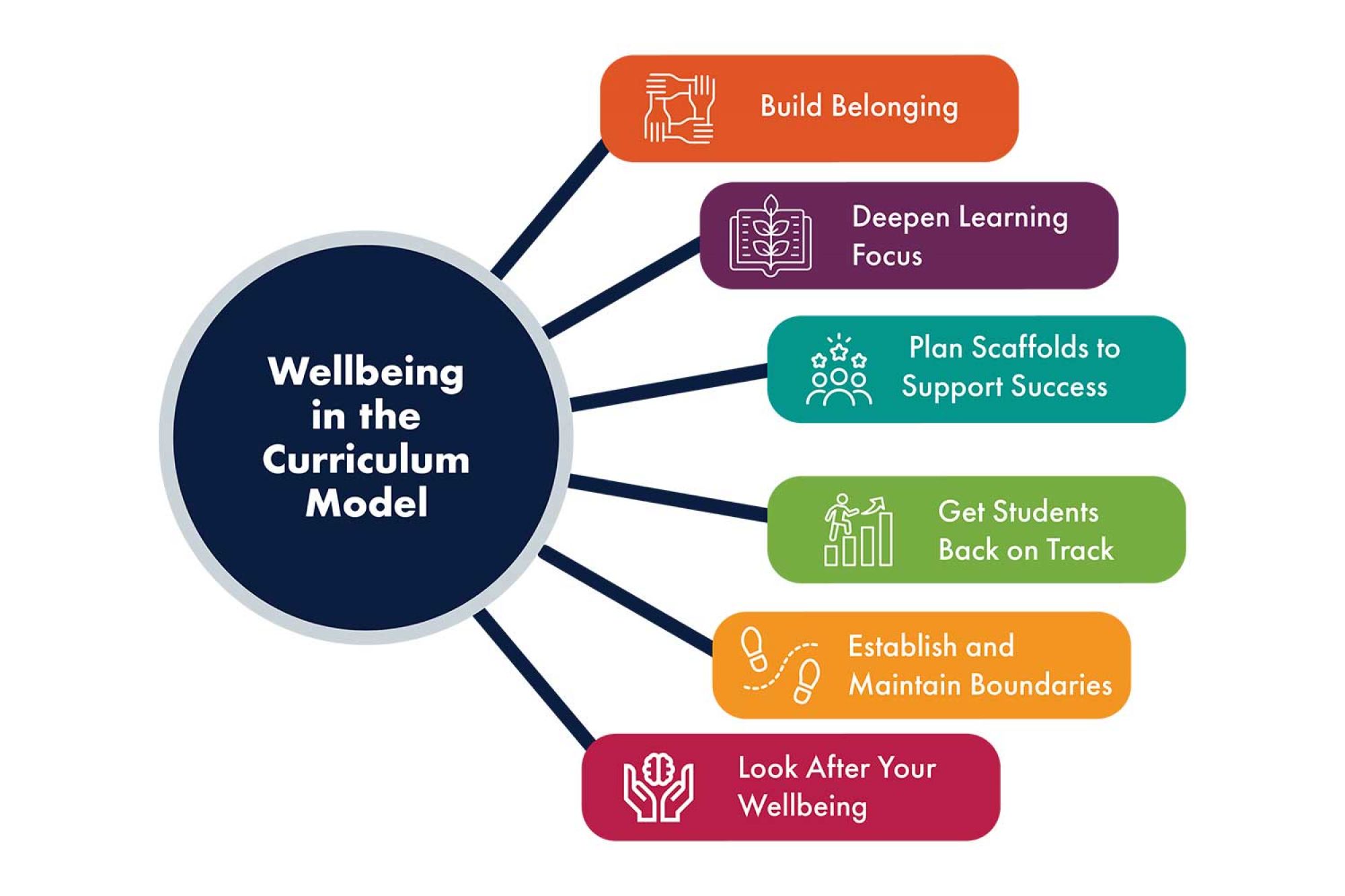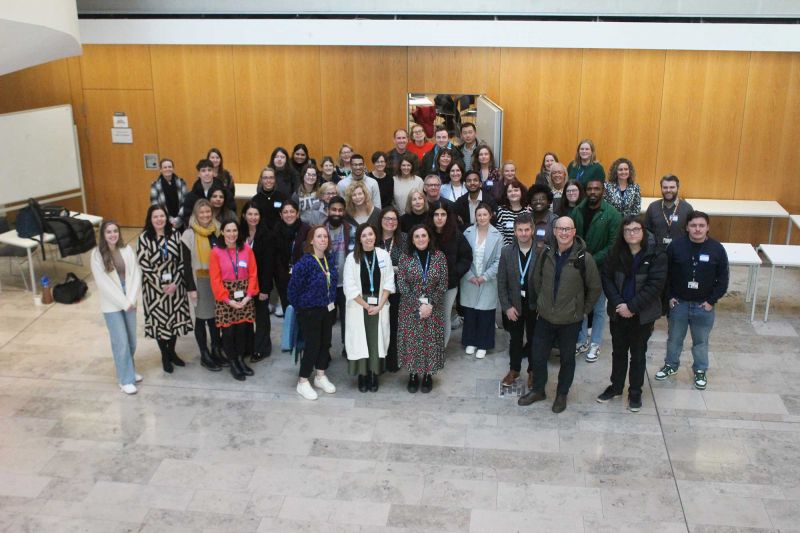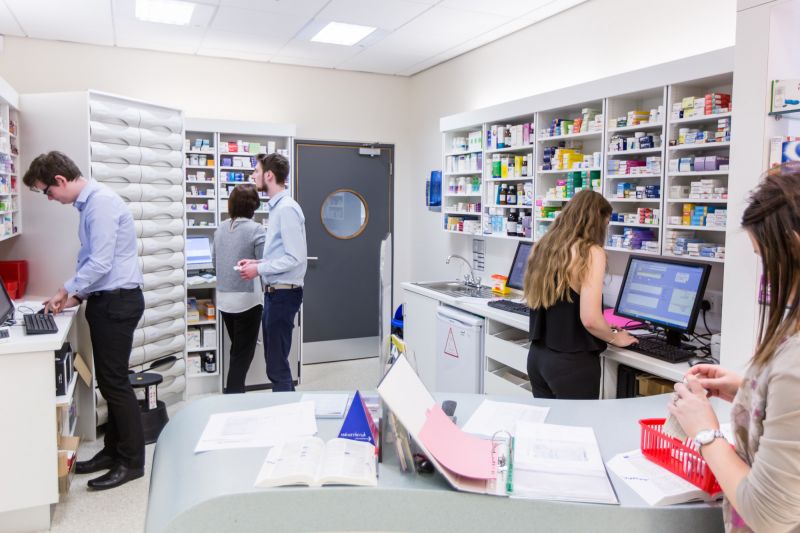Page content
Embedding Wellbeing in the Curriculum

Wellbeing is embedded in Ulster University’s Institutional Strategy, People, Place and Partnership and is recognised as a core Quality of our Learning and Teaching Principles. Both frameworks underscore the importance of wellbeing in maximising student engagement and academic success. With the curriculum serving as one of the few consistent touchpoints between students and the University, our learning and teaching practices play a vital role in fostering purpose, connection, engagement and structure (Advance HE, 2022). These elements are foundational to embedding wellbeing and belonging as core components of the academic experience at Ulster.
At Ulster, we are committed to empowering students to thrive both personally and academically. This commitment is reflected in our Capstone Graduate Attribute: the Thriving Individual. We strive to create a supportive environment where students can acquire new knowledge, develop valuable skills, and explore their unique interests and talents, fostering confidence in their chosen fields. In addition, we offer comprehensive mental health and wellbeing support to help our students flourish throughout their university journey.

Ulster University participated in the Inter-University Advance HE Collaborative Project during the 2023/24 academic year, which aimed to support institutions in strengthening student belonging. To ensure a truly ‘whole university’ approach, this initiative was delivered through a cross-institutional collaboration involving the Learning Enhancement Directorate, the Student and Graduate Success Directorate, the Ulster University Students’ Union (UUSU), and all four Faculties. Central to this work was the establishment of the Institutional Wellbeing Leadership Network in 2023. The Network is proud to present a curated collection of its guidance and resources to support peers in integrating wellbeing and belonging into the curriculum.

One of the priorities of our Institutional Wellbeing Leadership Network was to clearly define what we mean by Wellbeing and Belonging at Ulster. Establishing clear, shared definitions is essential to ensure a consistent and meaningful approach to embedding the Wellbeing Principle across the curriculum. Defining these concepts not only aligns with our institutional strategy but also provides staff with a north star in designing inclusive curricula and supportive learning environments. It enables a coordinated approach to curriculum design, academic development, and student support, ensuring that wellbeing and belonging are central to the student experience and embedded in ways that are relevant, responsive, and impactful.
What do we mean by Wellbeing at Ulster?
"A state of wellbeing in which every individual realises his or her potential, can cope with the normal stresses of life, can work productively and fruitfully and is able to contribute to her or his community”.
World Health Organisation
What do we mean by Belonging at Ulster?
At Ulster University, we understand belonging as a nurturing and dynamic environment that fosters connection, builds inclusive communities, and instils confidence. It is a space where all students feel safe, accepted, valued, and empowered—enabling them to take ownership of their growth, contribute meaningfully, and actively shape their university experience.
Wellbeing and Belonging Leadership Network (Updated June 2025)
Ulster’s Wellbeing in the Curriculum Model
An overview of the Wellbeing in the Curriculum Model
Ulster Staff and Students co-created a Wellbeing in the Curriculum Model to provide a strategic framework to guide the integration of wellbeing within the curriculum. This model is firmly grounded in the principles outlined in Advance HE’s Embedding Mental Health Toolkit (2022) and is shaped through a design-thinking approach that places the student experience at its core.
Rooted in the lived realities of students at Ulster University, the model reflects the authentic challenges related to wellbeing and belonging as identified by 28 student co-designers. Our students collaborated with staff in a series of problem-solving hackathons, working together to identify barriers and generate innovative solutions to enhance the student experience. Putting the student voice at the centre to drive the agenda and outcomes, this collaborative model, developed in partnership with UUSU, has been a vital component and common thread throughout the leadership network and its initiatives.
By integrating both institutional insight and student-led perspectives, the model serves as a practical guide for educators and curriculum designers to meaningfully embed wellbeing and foster a stronger sense of belonging across all stages of curriculum development and delivery.
The Wellbeing in the Curriculum Model
Ulster’s Wellbeing in the Curriculum Model is designed to be context-sensitive, allowing for adaptation across disciplines, programmes, and student cohorts.
Its primary purpose is to serve as a key reference point when designing or continually enhancing programmes and/or modules, with a focus on embedding wellbeing and belonging meaningfully into the academic experience.
The model is built around six PRACTICES:
- Build a Sense of Belonging
- Deepen the Learning Focus
- Plan Scaffolds to Support Success
- Support Students to Get Back on Track
- Establish and Maintain Boundaries.
- Look after your Wellbeing as an Educator
Ulster Wellbeing and Belonging in the Curriculum Model
A model to guide ‘Embedding Wellbeing and Belonging in the Curriculum’

How to apply the model?
Learning designers can explore the ‘six’ practices of the model either collectively or individually, depending on their goals and context. It offers flexible modes of application:
- Linear – a step-by-step sequence, ideal for programme design, evaluation, or revalidation.
- Cyclical – a repeatable process suited to continuous enhancement cycles.
- Iterative – a refinement-focused loop, ideal for complex or long-thin modules where gradual development is needed.
- Stand-alone – to address a specific wellbeing-related challenge that may arise during delivery; Supporting Student to get Back on Track, a specific wellbeing consideration identified during programme/module redesign, and/or an identified need to plan scaffolds to support success.
The Wellbeing Model and its Six Practices
Below is a suite of staff- and student-centred resources categorised under the six practices of integrating wellbeing into the curriculum to support curriculum (re)design and curriculum delivery.
Resources and Activities for Embedding the Six Practices of Wellbeing in the Curriculum

Provide considerate and timely inductions, Generate social belonging, Co-create a shared discipline community

Clarify Learning Tasks, Clarify Assessment Tasks

Prepare Students for Transitions, Prepare Students for Assessments

Encourage re-engagement, Manage the disengage
Thriving at Ulster
At Ulster University, we are committed to empowering our students to flourish both personally and academically. This commitment is embodied in our Capstone Graduate Attribute: the Thriving Individual.
The THRIVE Model, designed by students and inspired by this attribute, is part of a broader wellbeing initiative that encourages students to take simple, everyday actions to support their mental health and emotional wellbeing. Rooted in learning and student experience, THRIVE promotes six practical, learning-based actions that help prevent mental health issues and foster resilience, so every student has the opportunity to thrive during their time at Ulster and beyond.
THRIVE

Project Leads

Colette Murphy
Senior Lecturer

Professor Michaela Keenan
Associate Dean (Academic Quality & Student Experience)


















